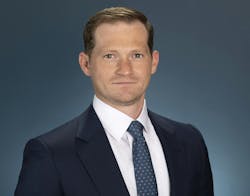For NOLN readers, it’s always all eyes on quick lube—and every person who has a dedicated interest in this industry has their own stake in the game. This notion also extends to investors.
Steven Shemesh is an analyst with RBC Capital Markets, which is part of the Royal Bank of Canada. He works specifically in equity research.
“Basically, it’s my job to be the expert on a specific subset of companies, and I tend to focus on consumer in general with a skew towards retail,” Shemesh says.
This includes markets from Walmart and Target to Wayfair and Chewy. Naturally, automotive is in this mix as well, including auto parts and auto services—the likes of Valvoline, Driven Brands, and CarMax.
“It’s our job to really assess the financial well-being of these companies and help guide investors who are clients,” Shemesh says. “We help advise them on ... positioning for this specific subset of stocks.”
Shemesh says a lot of time is dedicated to understanding what is going on from an industry level—providing perspective on the direction of companies from a top line (sales and revenue) viewpoint to a profitability viewpoint. To provide some context and how it applies to quick lube, Shemesh spoke with NOLN about a few key topics.
The Electric Element
When it comes to electric vehicle penetration and its potential impact on the quick lube market, Shemesh explains how investors are learning and doing the math on EVs.
RBC has an EV model that they update which currently approximates about 8% of vehicles sold as electric.
“There’s a big difference, though, between the amount of vehicles being sold and what the car parc actually looks like,” Shemesh says.
Shemesh says, for example, if you were assume that by 2020, 60% of vehicles sold are electric, (which he says feels like a stretch, as the infrastructure may not be there for that growth) and 100% by 2040, the car parc would see a shift from majority ICE to EV around the year 2045. But that’s not the end of the equation.
“The core customer for a Take 5 or a Valvoline is going to be driving a vehicle that’s between five and 15 years old,” Shemesh continues. “So, you take that math of 2045 when that starts to top and you apply, conservativity, maybe another seven years to that—you're looking at really 2050 before you start to see a material impact to demand.”
Then, look at that shift from the investor perspective.
“From an investor standpoint, I think the multiples maybe start to get affected a little bit before that if EV demand starts to ramp up pretty quickly, but from a pure quick lube demand standpoint, I think most people are starting to understand that it’s going to be a significant amount of time until that actually starts to affect the P&L of a company,” Shemesh says.
Real Estate Reality
Physical buildings are factors of consideration as well. Shemesh mentions pits as an example of difference depending upon which quick lube banner you are looking at. Additionally, the bays play a role.
Shemesh says RBC tends to see a consistent trend of two-to-three bays per quick lube facility, which can sometimes be accredited to the fact that many quick lubes exist in confined real estate scenarios such as the parking lot of a strip mall.
“Now, you can get creative in what that looks like and have two-to-three longer bays,” Shemesh says. “And, for instance, if you have three bays that are two cars deep, you can basically fit five cars in at any given time and still allow for every vehicle in there to exit if you leave that middle front open.”
Shemesh says that’s an area many players are looking into, as well as how it all ties back to electric vehicles.
“I think another one interesting debate here, is at some point, electric vehicle demand is going to increase, and quick lube players are going to have to find ways to be helpful and do preventative maintenance on electric vehicles,” he says.
This may involve a longer type of maintenance for providers who are more used to quick 15-minute oil change increments—meaning something like two bays may end up being the “less attractive” avenue, according to Shemesh.
“We’ve heard from some people in the industry that they don’t want a building with two bays because eventually services are going to take a little bit longer and if you only have two bays and one of them is clogged up for an hour, that significantly reduce these amount of time—the amount of vehicles that you can service per day,” he says.
Additional Areas
Investors want to know where quick lube customers are coming from. Shemesh points to a compelling data point that most quick lube shops get their volume of customers from an eight to 10-minute radius of their location.
It’s not a matter of only having one service provider per geographical area—Shemesh says there is a potential for there to be, for example, two providers in a city that can still see 50 to 100 vehicles per day at their locations.
There is also an investor focus on where same-store sales growth is coming from, Shemesh notes. Is it the switch from conventional to synthetic blend or full synthetic? Is it additional services such as windshield wipers and cabin filters? Or is it consistent list price increases? These are questions worth pondering.
“So, obviously oil changes ... they’re not a new concept,” Shemesh says. “There’s a finite amount to go around and right now everyone is getting their oil changed somewhere. So, where are these quick lube players going to actually be growing transactions from? Where are they going to be gaining share from? Is it from other quick lube players? Is it from dealerships? Is it from tire and repair shops? So, I think that’s a big focus for a lot of folks right now.”







